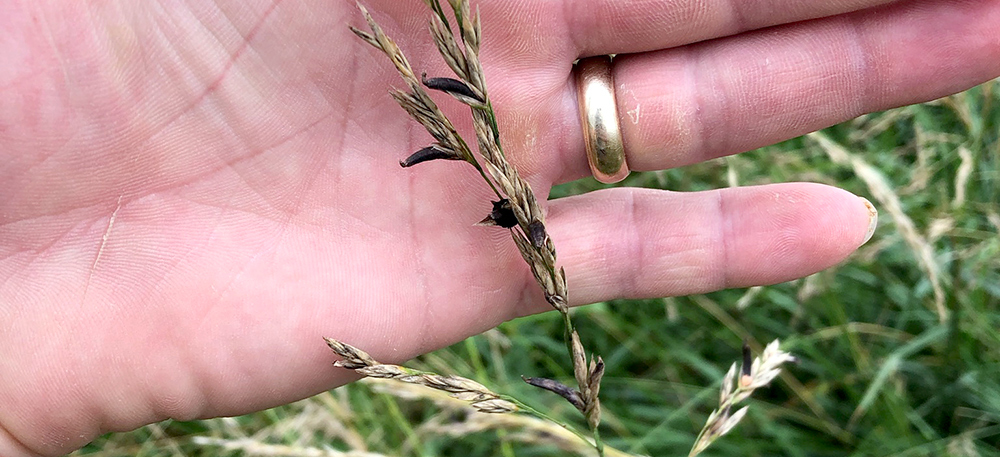High Ergot Levels Negatively Affect Cattle
Symptoms to watch for when cattle are consuming ergot-infected feeds.
Ergot is a fungus that grows on certain grasses and grains when moisture conditions are just right. It becomes a problem mainly after a wet growing season, but rarely during dry conditions. The fungus replaces the seedhead with a dark brown/black mass and produces toxic alkaloids. One or more of the kernels in the seedhead are replaced with this dark, hard “ergot body.”
Beating Summer Pneumonia
What does summer pneumonia look like in calves, and what should you do about it?
Though the stress of calving season is behind us, cattle producers have to stay vigilant, because things like nursing-calf pneumonia and pinkeye can take a lot of the fun out of baseball games and county fairs. Let’s take a quick look at summer/nursing-calf pneumonia.
Pinkeye Signs and Treatments
K-State beef cattle veterinarians say pinkeye can lead to blindness if left untreated.
Anyone who has ever had a scratch on their eye or had dust get under their eyelid can attest to how painful an eye condition can be. Like people, cattle can experience irritants in their eyes, and that can often lead to pinkeye, say the experts at Kansas State University’s Beef Cattle Institute on a recent Cattle Chat podcast. “Health & Husbandry” Author Brad White shared additional details on the Angus At Work podcast.
July 6, 2023 | Vol. 15 : No. 7-A
Genome Sequencing of Moraxella Bovis Opens Doors for New Interventions Against Pinkeye in Cattle
Cattle pinkeye, or bovine infectious keratoconjunctivitis, is a very contagious eye infection that causes redness, itchiness, pain and discomfort in the eyes of affected animals.
Scientists have revealed there are two different variants, or genotypes, of Moraxella bovis (M. bovis), a bacterium known to cause pinkeye in cattle. This finding helps scientists understand how different types of M. bovis cause infection in livestock and can help them develop preventative measures to protect U.S. cattle against this disease.
Keep Tabs on Water Quality, Access as Ponds Dry
K-State beef cattle experts discuss changes in water quality as ponds dry up in the summer heat.
Anyone who has spent time working outside in the summer knows the importance of drinking adequate amounts of clean water to keep heat-related illnesses away.
Fescue Challenges — Ways to Minimize Toxic Effects
Seedheads are the biggest problem for cattle.
Fescue toxicosis is common in cattle grazing endophyte-infested tall fescue and is detrimental to growth and performance. Tall fescue is a widely used forage across much of the country — for hay and pasture — because it is so hardy.




